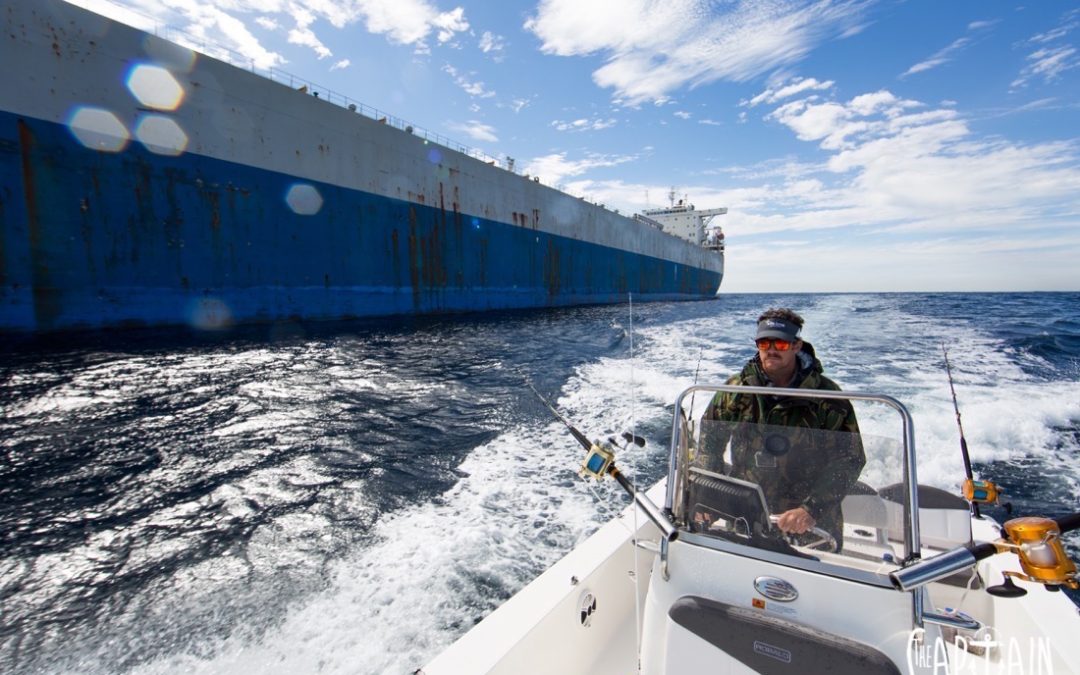Rule one: keep your eyes open. Peter Pakula shares his wisdom on reading the signs and finding the fish.
Electronic aids (sounder, GPS, temp gauge) certainly help you find fish, but they’re not the most important tool in your belt. They don’t tell you where you should be, they only tell you where you’ve been. Unfortunately, the oceans are in continual flux. Every part of your adventure is in new water and the SSTs you looked at yesterday will have changed before you can even punch the lat and long into your GPS.
The most important thing to analyse is what’s going on around you in the moment. This is mainly done with your eyes. As you become more experienced, other senses such as smell and feel come into play. You’ll be able to smell the sweet oily baitfish slicks that tell of recent action upwind. You’ll be able to feel what the current is doing by the way your boat reacts on turns and in certain directions. For now, though, we’ll concentrate on training your eyes. These are your most valuable assets when hunting for signs of fish life.
The fish we’re seeking can be grouped as predators, but in reality, just about every species in the ocean is a predator, each feeding on other creatures. They all have one thing in common: they want to use the least amount of energy possible to feed.
As currents smash into each other they force nutrients to the surface where sunlight interacts to help algae grow quickly. Juvenile fish feed on the algae and in turn the chain of predation continues up the line to the larger predators we seek. Our best indication of these corridors is temperature change. The greater the change over the shortest distance, the greater the concentration of life in this corridor.
Small baitfish are unable to travel through temperature changes – and associated salinity and oxygen levels – very easily. Larger predators take advantage of this “wall” to herd baitfish more effectively than in the open ocean.
When these currents interact with the shoreline and other structures such as reef, canyons and ridges, it has the effect of narrowing the corridors and intensifying the temperature differences. This is such a good place for a predator that they will often take up residence on structures and wait for the currents to bring food to them. Note that the predators here include many of the species we call baitfish.
Often these currents are part of oceanic eddies. The structure of an eddy is not uniform. The current is fastest along its leading edge and weakens towards the back and centre. The highest concentrations of phytoplankton, algae – and therefore the animals that feed on them and the rest of the chain of life – are along the leading edge of the eddy. The leading edge is also where the major temperature changes or breaks are found. Note that the larger predators do have a higher tolerance of temperature changes so a wide area may have to be explored to locate them. Using charts, wind direction, SSTs and recent reports, we can get some idea of where to go, for example, a set of canyons, a drop-off or really anything that disrupts the natural flow of currents (including tidal currents).
Now it’s time to check for signs that we’re in the right spot. Basically, any sign of life or water disruption. Current lines are easy to see on calm days – they’re the smoother water highways that wind through the ocean. Often there’s different-coloured water on either side. The edges may be marked with weed lines or other flotsam gathered by wind and current. Even in the open ocean, any sized flotsam is worth investigating. Hopefully, there’ll be an associated temperature change. On rougher days, the currents will cause some areas to be rougher than others, particularly on the edges of currents and over structure.
One less obvious sign is coastal shipping. These freighters run with the fastest current, where the best temperature breaks are, to save fuel and increase speed. Other signs include birds sitting, gliding or hovering expectantly. The higher the bird is circling, the deeper the fish are or they’re hopefully working on breaking fish. Bait also may be flicking on the surface or showing on the sounder.
In short, any form of life is a sign of a present food chain; and anything that differs from its surroundings. The ideal combination is structure with the current hitting it – preferably the front or edge of an eddy with a few signs. The more signs you spot in one place at the one time, the better your chances will be.


Recent Comments